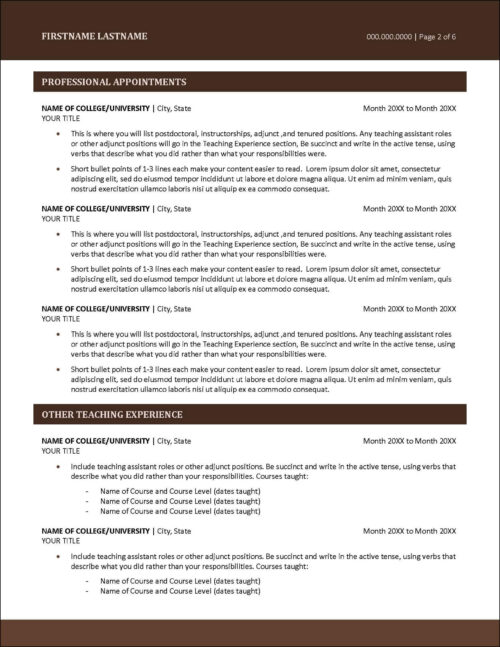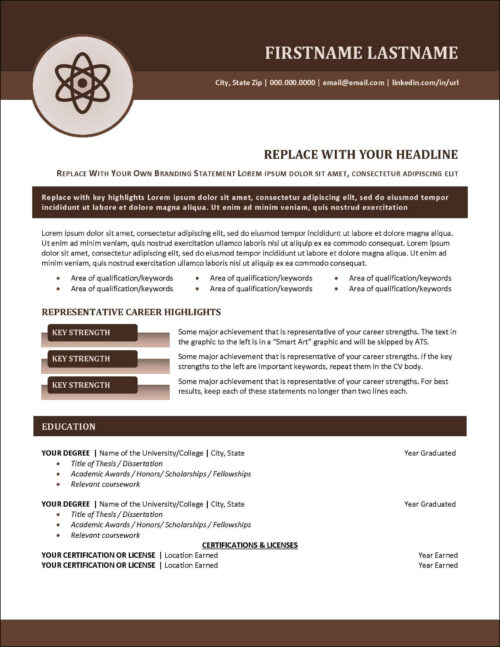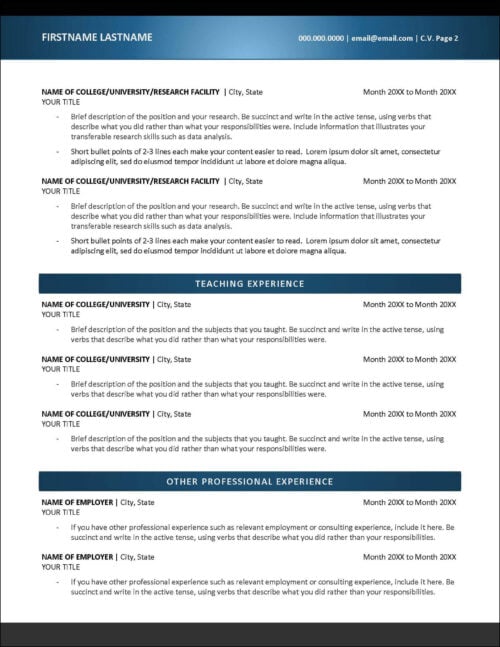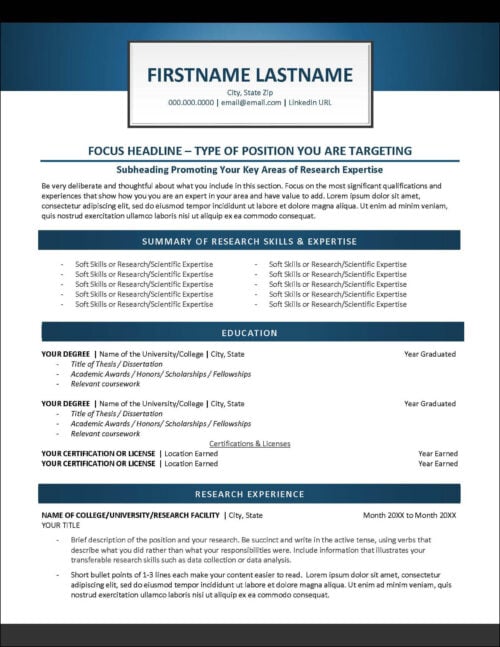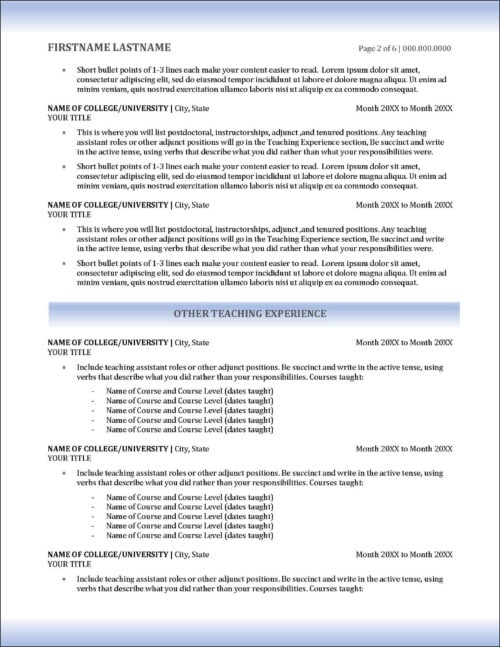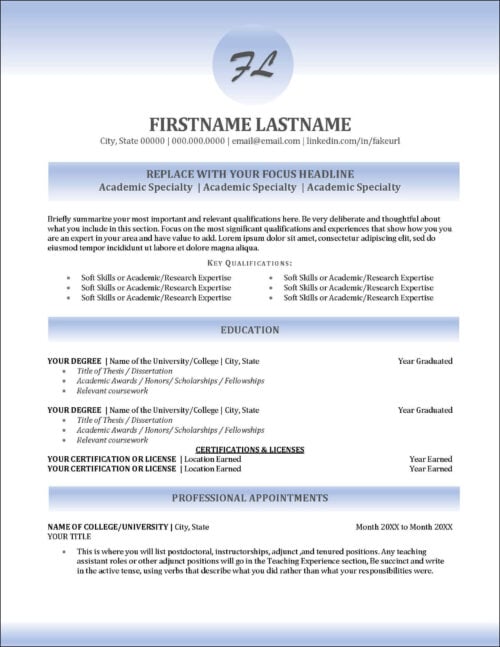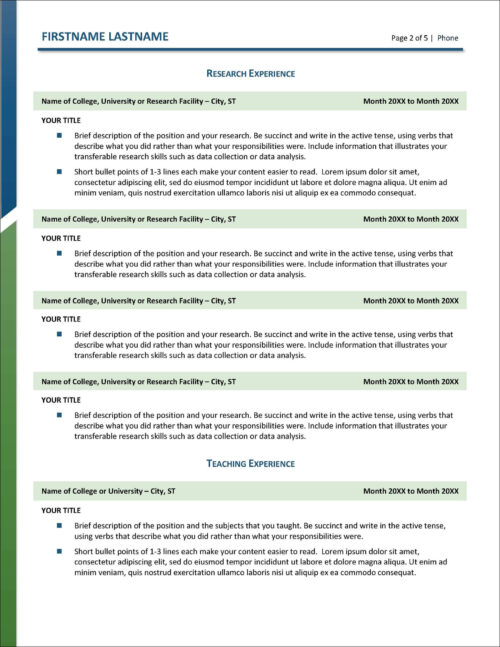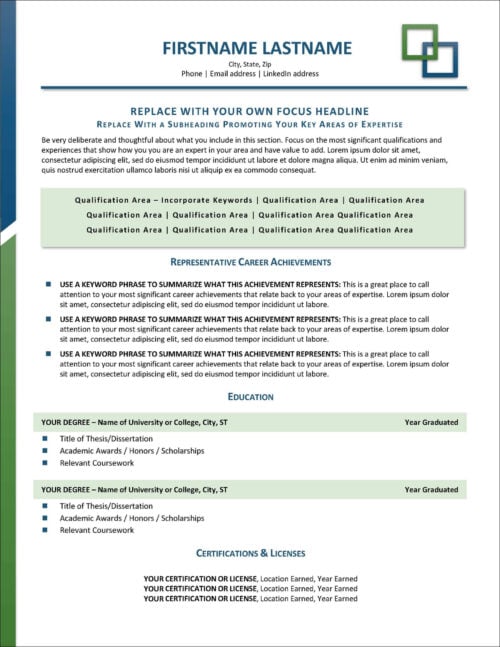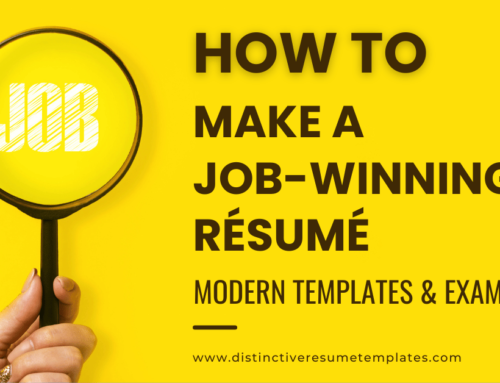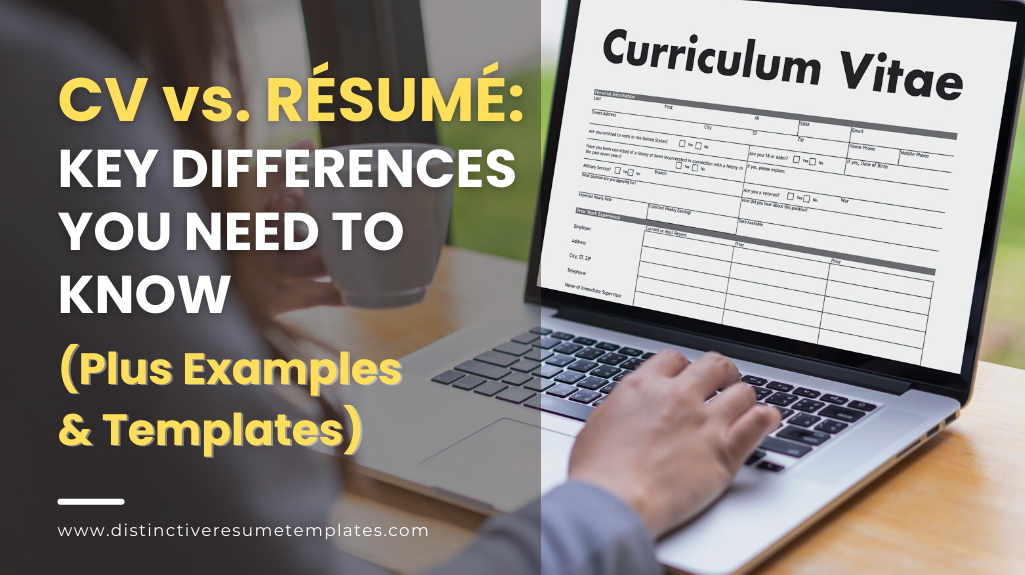
It is a good bet that you’ve never thought much about the difference between a CV and a resume.
In fact, if you are like most job hunters, you may even think the words CV and resume are synonyms and essentially the same document.
Spoiler alert: They aren’t.
But don’t feel bad. You aren’t the only one who is confused. Even though it is incorrect to do so, the words are often used interchangeably.
TABLE OF CONTENTS
As a job seeker, you may be asked for a CV when the recruiter is really asking for a resume. Or, you may be asked for a resume when a CV is more appropriate. And worse, mixing the two up can bring your job search to a screeching halt.
In this blog post, we aim to clear up the confusion once and for all. The questions we will answer:
Even better: as the saying goes, “a picture is worth a thousand words.” We will actually show you the differences between a CV and a resume using examples and templates you can download to create your own resume or CV.
Finally, courtesy of Dr. Cheryl Minnick, EdD, NCRW, MRW, CCMC, NCOPE, CHJMC, Director of Career Success, University of Montana, College of Humanities and Sciences, we are providing a handy CV checklist that you can download to use when writing your CV.
Key Definitions:
Curriculum Vitae vs Resume
What is a Resume?
A resume is a strategic, targeted document that summarizes your work experience, education, skills, and accomplishments as they relate to a specific job.
Resumes are formal documents that serve to “promote” the job seeker as the ideal candidate for a job. You can structure your resume in a reverse-chronological format, functional format, or combination format.
When spelled and written correctly, the word resume has two accents. Like this: résumé.
The word résumé comes from the French word resumer, meaning to “sum up.”
In common usage on the internet and in email, for formatting reasons, it is usual to drop the accents and write résumé as resume.
On the other hand, for most business purposes, such as when the word is written on documents (for example, on the enclosure line of our cover letter templates), it is best to write it correctly and include accents.
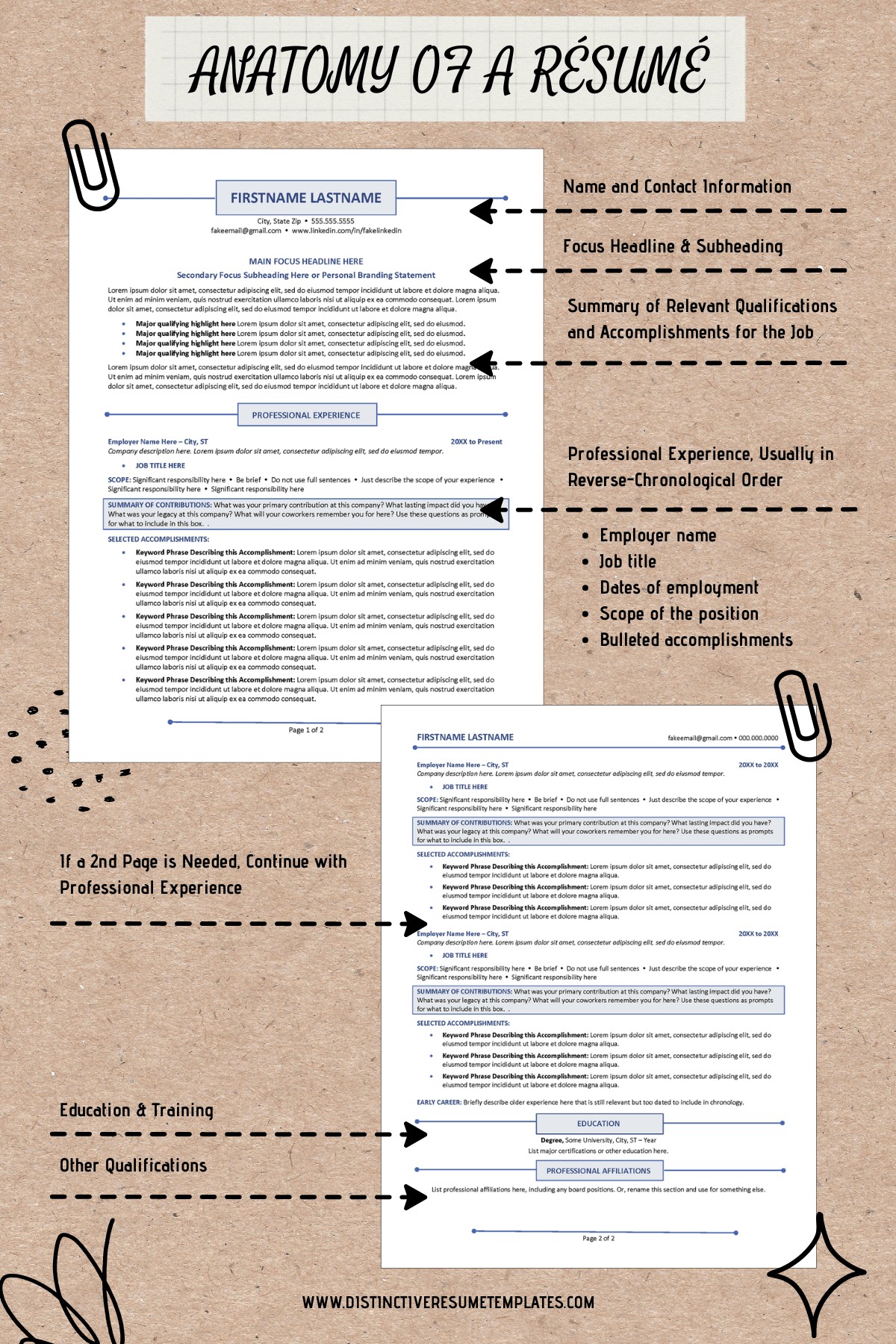
What is a Curriculum Vitae?
Curriculum vitae, often shortened to CV, is a Latin term meaning “course of life.”
If you see this spelled as curricula vitae (“a” instead of “um”), it is a reference to the plural. In other words, several CVs rather than a single CV.
Similar to a resume, a CV is also a summary document, but it is a more detailed professional overview highlighting a person’s academic credentials, scholarships, awards and honors, research experience, teaching experience, published works and presentations, and other professional experience.
Even though there are some similarities between a resume and a CV, there are also some key differences that you must know, and we’ll cover those next.
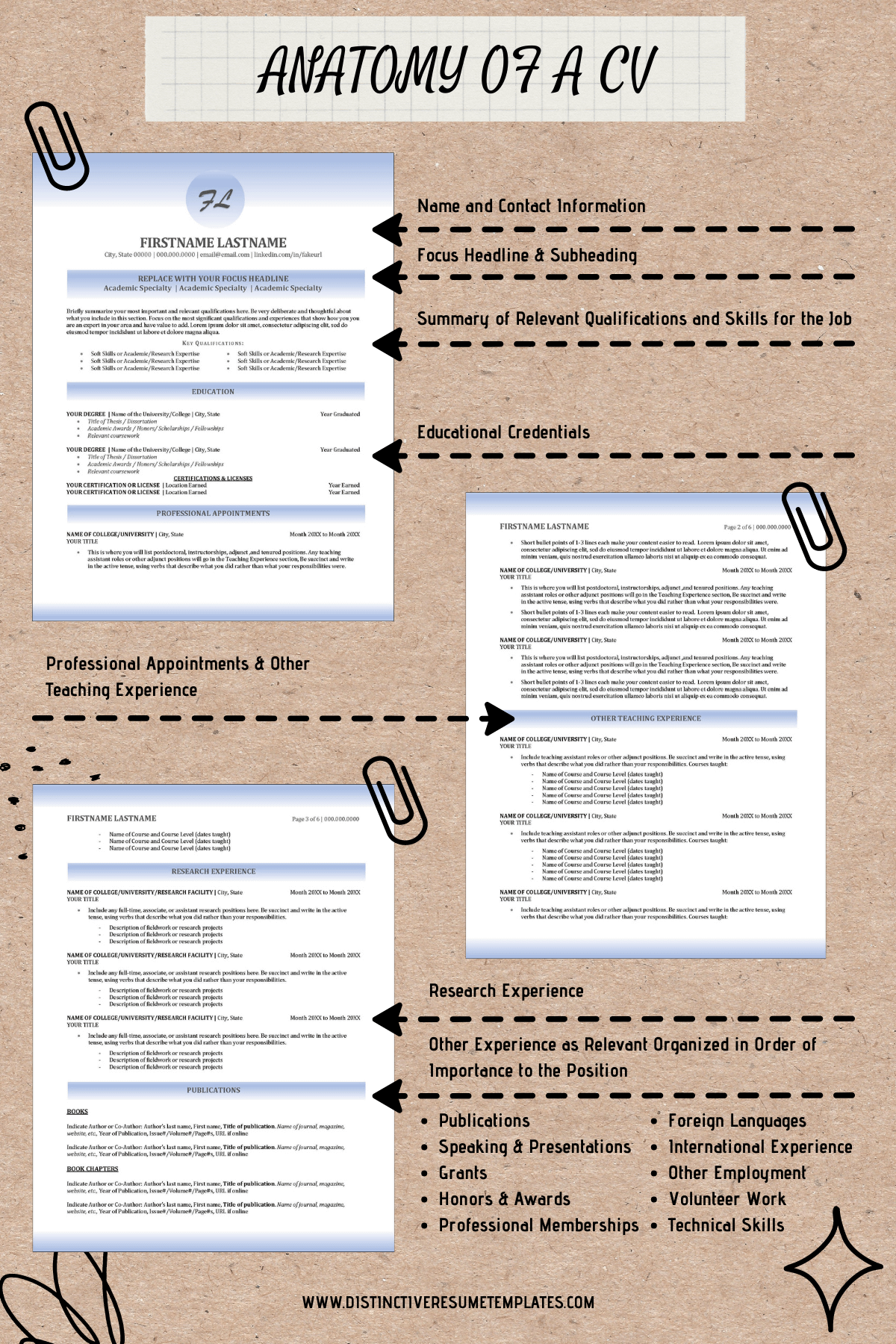
What Are The Key Differences Between a CV and a Resume?
1) Document Length
One to two pages is the most common length for a resume. One page is usually ideal for a younger professional, while a two-page resume is more common for experienced professionals. While a resume may sometimes be longer, more than three pages are generally considered too long. Consider the use of a resume addendum if you believe your resume is too long.
A CV, on the other hand, is usually much longer and more detailed than a resume. Typically, CVs are at least two to three pages long and can sometimes be much longer. The length is flexible.
2) Purpose
You might think that a resume and a CV are both just documents with lists of previous jobs and qualifications. But to be effective, they should actually be much more than that.
The purpose of both a CV and a resume is similar in that they are both opportunities to sell yourself to potential employers and show them that you have skills and experience relevant to the job.
But they differ in that a CV provides an in-depth look at your academic qualifications and experience as it relates to academic teaching and scientific research positions.
In contrast, a resume provides a briefer overview focused on relevant work experiences for the job, usually with less emphasis on educational credentials, and should be sent when submitting a job application for most other positions outside of academia.
3) Content
Again, regarding what to include in your resume or CV, there are similarities, but there are also significant differences.
Similarities in CV and Resume Content
CONTACT INFORMATION: Your name and contact information should be in the header of both a CV and a resume. You should not include a street address. Instead, include just a city, state, and zip. Also include a phone number, email address, and links to your professional social media accounts, such as LinkedIn. If you have a professional blog, you should include a link on your CV, but it is optional to include it on your resume.

FOCUS HEADLINE: Including an “objective” on either document is considered an outdated practice. Modern CVs and resumes use a “headline” and sometimes a “subheadline” to establish the focus of the documents.
PROFESSIONAL SUMMARY: Most CVs and resumes include a summary section at the beginning of the document. The summary provides a brief overview of your most significant and relevant qualifications and accomplishments related to the job you are targeting. From a review of your summary, the reader should understand the key ways you are qualified for the job.
SKILLS SUMMARY: Though optional, it is common to include a summary of relevant skills, qualifications, and areas of expertise in both a resume and a CV.
EMPLOYMENT HISTORY: Both documents should include a chronological listing of your current and past jobs (it is okay to leave out irrelevant employment).
They differ in where you include this listing. In your resume, it is usually listed immediately following the professional summary. In your CV, it will usually be listed near the end of the document.
They also differ in detail. Your CV should provide a high-level overview of your primary responsibilities and accomplishments in each job. Your resume should tell a more in-depth story of your challenges in each position, how you met those challenges, and the results of your accomplishments.
EDUCATION: On a resume for an experienced professional, educational degrees are usually listed at the end of the resume. You may also include any relevant certifications, additional training, or licenses. On a CV, you will include all of this information immediately following the professional summary section, near the beginning of the document. Typically, a CV will include more detail, such as a thesis or dissertation title, academic awards, scholarships, fellowships, and relevant coursework.
Differences Between CV and Resume Content
TEACHING EXPERIENCE: Your CV should include a separate section for any teaching experience you have listed in reverse chronological order (most recent first). This is where you will list any academic postings you have held in postdoctoral, instructorship, adjunct, and tenured professor positions. You can also include teaching assistant (TA) jobs. Include the name of the school or institution where you taught, your title, and the dates of the experience. In addition, include relevant details about your students (undergraduate or graduate), the number and sizes of classes you were responsible for, and the courses you taught.
RESEARCH EXPERIENCE: Research experience should be showcased on your CV. As you did with your teaching experience, list it in reverse chronological order. Include all your research experience, paid or unpaid, and in any capacity, such as a research scientist, research assistant, research associate, graduate assistant, or postdoctoral fellow.
PUBLICATIONS: Include a listing of all your published works, including books, book chapters, and journal articles. You may also include relevant published works online, such as blog posts.
PRESENTATIONS: List any public presentations and conferences. Include links to any videos of your presentations posted online.
OTHER INFORMATION: Every CV will be unique, depending on the specifics of your experience and the positions you are targeting. Some common categories to include on CVs are grants, honors and awards, professional memberships, foreign language skills, technical skills, and volunteer experience.
REFERENCES: Do not include professional references on either your resume or CV. Instead, list them on a separate professional references sheet you provide during the interview. Most of the resume template collections and CV template collections on our site include, as an option, a template for your professional references.
4) Format
While you have a lot of flexibility in arranging the sections of your CV, the general format and reverse chronological listing of the information are usually relatively uniform and structured.
There is generally more room for creativity in your resume format, and you can structure it to match the specifics of the job for which you are applying. For example, you may choose a reverse chronological resume format, a functional resume format, or a combination resume format.
Should You Send A Resume Or A CV When Applying For A Job?
If your goal is to land a new job, submitting a resume with a job application is usually the best choice for almost all professions and industries. This is because your resume is a concise summary focused on relevant experience and skills applicable to that specific job.
On the other hand, if you are applying for jobs in academia, such as teaching and research positions, you will usually benefit from submitting a CV. If you are a research scientist and you work in the corporate world rather than academia, in some cases, you may also be asked for a research CV instead of a resume. In rare cases, a CV is used by medical doctors, too.
As explained in the section on the differences between a resume and a CV, CVs are typically organized and structured to provide a greater depth of information than a resume, such as research accomplishments and grants received.
Should You Send A CV For International Jobs?
Even though recruiters may sometimes use the words interchangeably, if you are applying for a job in the United States, resumes and CVs are distinctly different documents.
But what if a recruiter contacts you about an international job and asks you for your CV? Which format are they asking you to send?
In many places worldwide, such as in much of Europe and New Zealand, recruiters don’t use the word resume. Instead, when they ask you for a CV, they are asking for a document similar to a U.S.-style resume.
If you have any doubts, ask. In most cases and for most job applications, a hiring manager won’t have time to read your full CV. They prefer that you submit a resume and do the work to distill the content to focus on the most relevant points for the position they are trying to fill. Even for international jobs, you usually use a CV only for academia-related positions.
Design Tips For Modern CVs And Resumes
In days past, it was typical for both a resume and a CV to be formatted as plain text on a page.
Unfortunately, plain text resumes or CVs can be boring to look at, and it is hard to keep your reader’s attention. You might have the best credentials of all the candidates, but it won’t make a bit of difference if nobody takes the time to read your resume or CV.
The solution is simple. Modern resumes and modern CVs make use of color and design to catch the eye and help make your resume or CV easier to read.
Of course, most people don’t have graphic design skills and don’t know how to create an eye-appealing design for their career documents. This is why starting with a professionally designed CV template or resume template is often the best choice.
As shown by the following example CV templates, transforming your outdated, plain-text CV is fast and easy. The same is true with using a resume template, as shown by these example resume design templates.
Example Modern CV Template
This attractive, modern CV template shows the incredible difference a little color and design can make to transform your plain-text CV into an eye-catching and easily readable marketing document.
Example Research CV Template
This sophisticated research CV template for Microsoft Word is perfect for academic research positions or other scientific research positions. Or, easily move the sections around and use it for teaching positions.
Example Academic CV Template
Your academic CV will shine and provide you with an unbeatable competitive edge for the most desirable teaching jobs when you use this academic CV template to transform it.
Example Professional CV Template
This modern, professional CV template draws from modern resume design principles to create a stunning professional CV. Consider changing the colors to match the colors of the university you are applying to.
Frequently Asked Questions
What is a CV (Curriculum Vitae)?
A CV, or Curriculum Vitae, is a Latin term meaning “course of life.” It is a detailed professional document highlighting a person’s academic credentials, scholarships, awards, research experience, teaching experience, published works, presentations, and other professional experiences. CVs are typically longer than resumes and provide an in-depth look at your qualifications, especially as they relate to academic and scientific roles.
What is a resume?
A resume is a strategic, targeted document that summarizes your work experience, education, skills, and accomplishments as they relate to a specific job. It’s typically shorter than a CV, with the aim of providing a concise overview of your qualifications for a non-academic job. Resumes can be structured in various formats such as reverse-chronological, functional, or combination format, depending on the job you’re applying for.
What are the key differences between a CV and a resume?
The main differences between a CV and a resume lie in length, purpose, and content. A CV is usually longer and provides a comprehensive overview of a person’s academic and professional accomplishments. A resume, on the other hand, is typically shorter and focuses on relevant work experiences and skills. The content in a CV is more detailed and includes sections like teaching experience, research experience, publications, and presentations, which aren’t usually found in resumes.
Should I submit a CV or a resume when applying for a job?
The type of document to submit depends on the job and the industry. For most professions outside of academia, a resume is preferred because it provides a concise summary of your relevant experience and skills. However, if you’re applying for academic, teaching, or research positions, a CV is usually the best choice because it provides a thorough record of your academic credentials and experiences.
Does it matter where in the world a recruiter is located when they ask for a CV?
Yes, in certain parts of the world like Europe and New Zealand, when a recruiter asks for a CV, they are actually asking for a document similar to a U.S.-style resume. It’s always a good idea to clarify what the recruiter is expecting if you’re unsure.
What is the easiest way to make a modern CV or resume?
The easiest way to make a modern CV or resume is to use a professionally designed template. These templates already include eye-catching designs and layouts, so all you need to do is fill in your information. They help ensure your CV or resume is visually appealing and easy to read, increasing the chances that a recruiter will notice and remember your application.
What should I include in my resume or CV?
Both documents should include your contact information, a headline, a professional summary, a skills summary, and your employment history. However, a CV should also include sections for teaching experience, research experience, publications, presentations, and other information like grants and honors. Remember not to include professional references on either your resume or CV. These should be provided on a separate sheet during the interview process.
What format should my CV or resume follow?
While you have flexibility in arranging your CV sections, the format and reverse chronological listing of information is usually uniform and structured. For your resume, you have more room for creativity and can structure it to match the specifics of the job you’re applying for. This could be in a reverse chronological, functional, or combination format.

